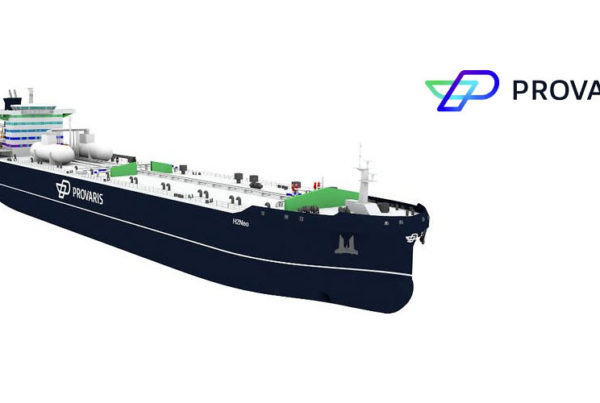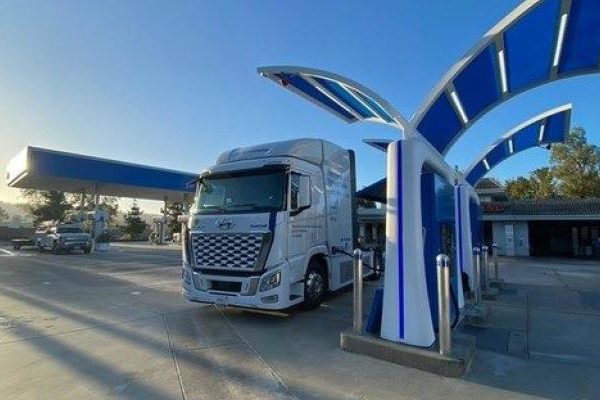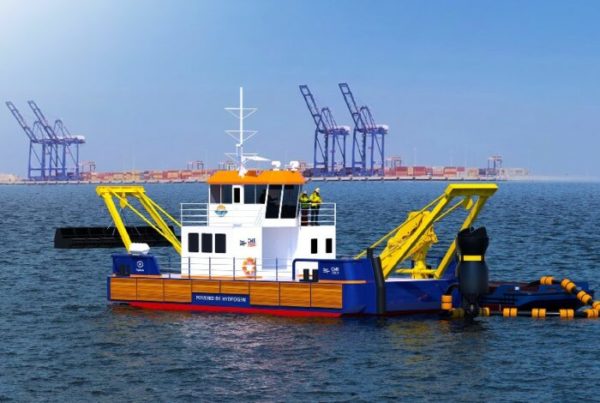
The trio “Next Mobility Accelerator” of Shell Deutschland GmbH (Hamburg), the MaierKorduletsch Group and Paul Nutzfahrzeuge (both Vilshofen) presented the first medium-duty fuel cell truck at the ITS World Congress in Hamburg. The three companies are thus providing a further building block for the development of a hydrogen economy in order to promote the decarbonization of the transport sector.
Road freight traffic could triple by 2050. At the same time, Germany has so far lagged behind its own targets to reduce greenhouse gas emissions. In addition, nitrogen oxide and other pollutant limit values are exceeded in many cities and regions. It is therefore important to reduce CO2 emissions and improve air quality, for example through new low-carbon or carbon-free drive systems and fuels as well as improved fuel efficiency, ”says the managing director of Shell in Germany, Fabian Ziegler.
In addition to low-consumption diesel with a growing biogenic share, Shell will in future increasingly rely on bio-LNG for heavy-duty traffic, as well as electricity charging solutions and green hydrogen for various applications in road freight transport. Shell works closely with industrial partners in order to break up the “chicken and egg problem” and to compare supply with demand.
For the newly introduced fuel cell truck, this means specifically: Paul Nutzfahrzeuge builds the vehicle with components from Mercedes-Benz Special Trucks, ZF and Toyota, and ensures service, maintenance and the supply of parts. MaierKorduletsch builds the first hydrogen filling station for the first trucks. Shell is planning to supply green hydrogen and is developing an integrated mobility platform including a vehicle offering on a pay-per-km basis. Subject to a final investment decision, Shell plans, together with other partners and with the support of public funding measures, to be able to offer its customers up to 2,500 fuel cell trucks and up to 50 hydrogen filling stations by 2025 in order to enable the hydrogen market to be activated in Europe at short notice.
The basis of the new zero-emission vehicle is a so-called “glider” – that is, a chassis and driver’s cab of the Mercedes-Benz Atego, equipped by Paul Nutzfahrzeuge with a central drive from ZF and a fuel cell from Toyota. The 15t chassis with a gross train weight of 24t has a range of up to 500 kilometers and can be filled up within 10 to 15 minutes. The hydrogen tank holds 30 kilograms. The first 25 prototypes are to be tested by selected customers in the coming year. Series production is planned for 2023.
- Shell also thinks in partnerships for heavy haulage and has therefore joined the H2Accelerate (H2A). The goal of the interest group of Shell, Daimler Truck AG, IVECO, Linde, OMV, TotalEnergies and the Volvo Group is to support the introduction of heavy trucks with fuel cell drives on a large scale. For this purpose, industry-wide synchronized investments are expected in the 2020s.
- As part of this initiative, Shell (Shell New Energies NL BV) and Daimler Truck AG recently announced that Shell would start operating a hydrogen filling station network for heavy trucks between the planned production sites for green hydrogen in Rotterdam, Cologne and Hamburg from 2024. In line with this, Daimler Truck AG plans to hand over the first heavy hydrogen trucks to customers from 2025. The partners’ plan provides for the continuous expansion of the hydrogen infrastructure in this corridor so that 150 hydrogen filling stations and around 5,000 heavy fuel cell trucks of the Mercedes-Benz brand can go into operation by 2030.
Read the most up to date Fuel Cell and Hydrogen Industry news at FuelCellsWorks




